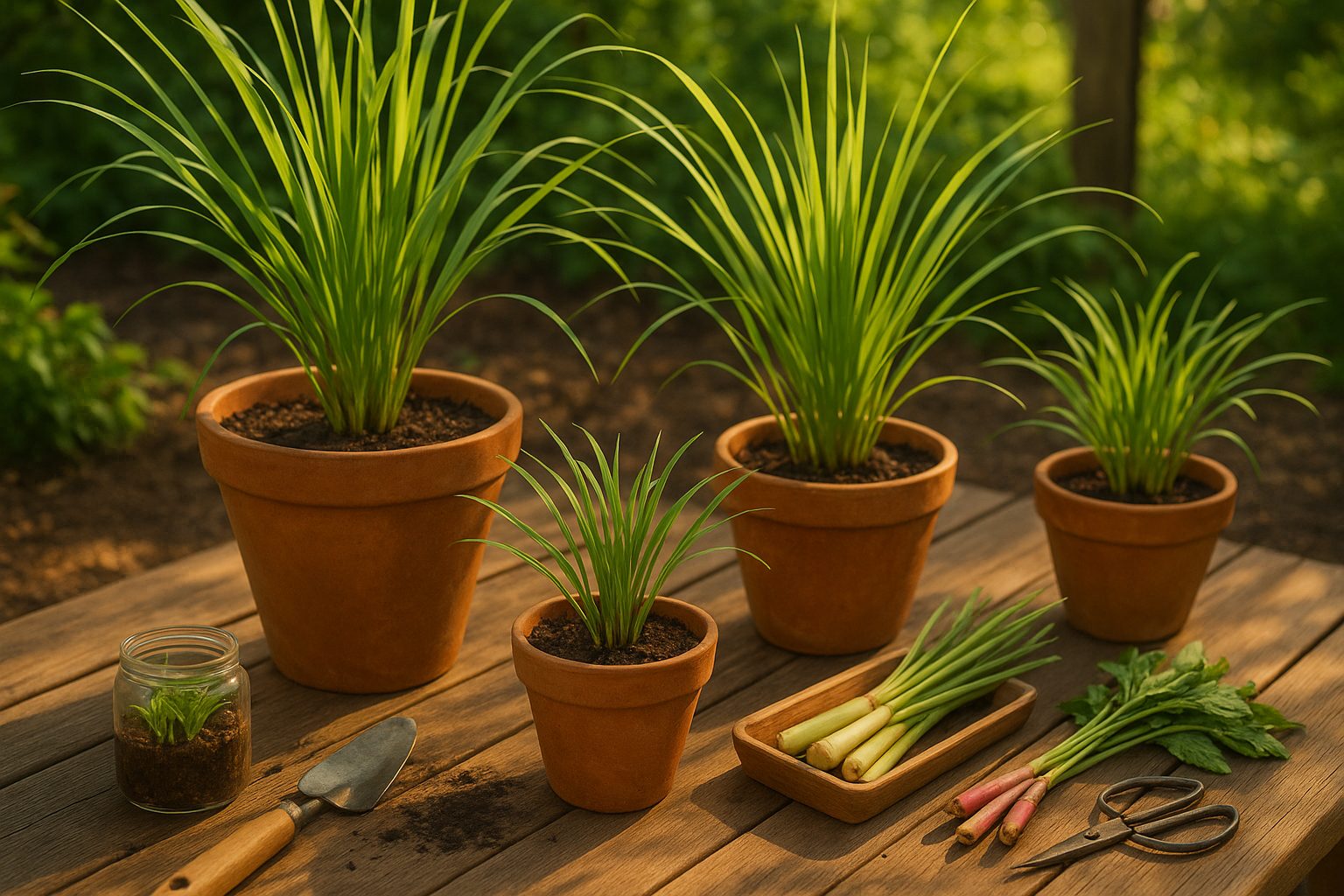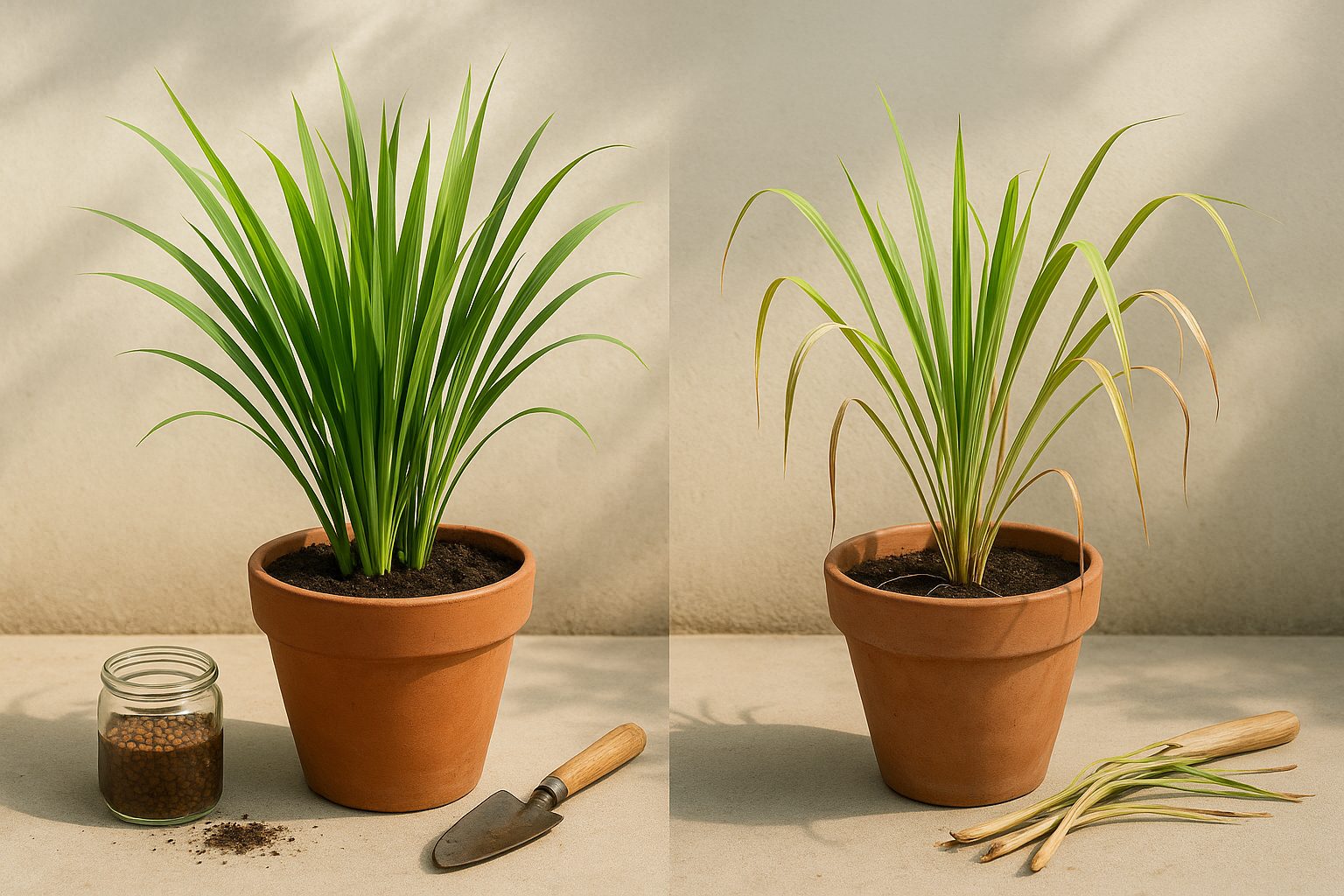Understanding Lemon Grass Sunlight Needs

Understanding lemongrass sunlight needs is essential if you want vibrant, healthy plants in your garden or on your windowsill. Lemongrass, a tropical herb prized for its fresh, citrusy flavor and aromatic leaves, thrives best when grown in plenty of sun. In fact, lemongrass is considered a true sun-loving plant—meaning it requires full sun to reach its growth potential and deliver flavorful harvests.
Full sun for lemongrass means at least 6-8 hours of direct, unfiltered sunlight each day. This amount of light powers photosynthesis, helping the plant develop strong stalks, lush foliage, and those unmistakable fragrant oils that make it so popular in cooking and herbal remedies.
If you’re growing lemongrass outdoors, select a spot that isn’t shaded by nearby trees, buildings, or fencing. Even a few hours of afternoon shade can slow down the plant’s growth and make it less vigorous, especially in cooler climates. For indoor growers, placing your lemongrass near a south-facing window or supplementing with a grow light can replicate those outdoor sunlight conditions.
Remember, insufficient sunlight often leads to pale, spindly stems and poor growth—signs that your plant may need a sunnier location.
In summary, lemongrass sunlight needs are simple but non-negotiable: strong, consistent, direct sun for most of the day. With the right light, your lemongrass will flourish, providing a season-long supply of fresh herbs for your kitchen.
How Sunlight Impacts Lemongrass Growth
Sunlight plays a crucial role in shaping the health and quality of lemongrass, directly influencing its size, flavor, and overall vigor. When lemongrass receives around 6 to 8 hours of bright, direct sunlight each day, it typically grows taller, with robust stalks and lush, green leaves.
This ample sunlight translates to a higher concentration of the essential oils that give lemongrass its signature citrusy aroma and flavor, making it more potent for culinary use. However, if lemongrass is deprived of sunlight—such as when grown indoors on a shaded windowsill—its growth can become stunted, with spindly, pale stalks and smaller leaves. Nutrient uptake may slow, resulting in a weaker flavor profile.
Symptoms of insufficient sunlight include yellowing leaves and an overall droopy appearance. On the flip side, too much intense sunlight, especially during peak summer midday hours, can cause leaf scorch or crispy, brown edges. Using shade cloth or relocating pots during the hottest parts of the day can help prevent this.
While natural sunlight is optimal, artificial grow lights can work if you’re growing lemongrass indoors. For best results, use full-spectrum LED lights, placing them 6–12 inches above the plant for 12–16 hours per day. Although plants grown under artificial light may be slightly less vigorous or flavorful than their outdoor counterparts, maintaining these conditions provides a solid alternative, especially in areas with limited sunshine.
Observing your lemongrass regularly for changes in color, texture, and growth habit helps you fine-tune lighting for maximum yield and flavor.
Seasonal Light Requirements for Lemongrass
Lemongrass is a sun-loving herb that thrives on long, bright days, making seasonal light adjustments essential for year-round growth.
In spring and summer, lemongrass enjoys abundant direct sunlight—ideally six to eight hours daily. Place outdoor pots or garden beds in the sunniest possible spot, and rotate containers weekly to ensure even exposure.
As autumn approaches and days grow shorter, sunlight intensity decreases. If your lemongrass is still outdoors, gradually move pots to maximize afternoon light or bring them indoors before nighttime temperatures dip below 50°F (10°C). Indoors, position the plant near a south- or west-facing window, and regularly wipe dust from leaves to allow maximum absorption.
During winter, natural light may dwindle to just a few hours, especially in northern climates, which can slow growth or cause yellowing. This is the time to invest in a supplemental grow light—LED or fluorescent models work well. Set the timer for 10-12 hours of light daily, keeping the lamp about 6-12 inches above the foliage.
Regularly monitor both the amount and quality of light your lemongrass receives, watching for signs of stretching or pale leaves, and adjust either the plant’s position or lighting schedule as needed. With these thoughtful seasonal tweaks, your lemongrass can flourish indoors or out, regardless of the calendar.
Positioning Lemongrass for Maximum Sun Exposure
To help your lemongrass thrive, it’s all about finding the sunniest spot possible. For outdoor gardens, choose an area that gets at least six to eight hours of direct sunlight daily—south- or west-facing plots are ideal, as they soak up the most rays.
If you’re potting your lemongrass, patios, decks, or balconies with full sun exposure work well; just be sure to keep the container away from shaded corners or under overhanging trees that could block the light.
Indoors, place pots near a south-facing window, which receives consistent sunlight throughout the day. East- or west-facing windows also work, but you might need to shift the pot periodically to chase the light, especially during shorter winter days.
If possible, rotate your lemongrass pot every couple of weeks so all sides get even exposure—this prevents the plant from leaning and growing lopsided.
Keep an eye out for common obstructions like curtains, furniture, or outdoor structures that cast shadows during crucial daylight hours. Trimming back overgrown shrubs or repositioning planters can make a significant difference.
By consistently checking how the sunlight moves through your space and responding to your plant’s needs, you’ll help your lemongrass develop lush, flavorful stalks perfect for your kitchen.
Adjusting Sunlight Indoors vs. Outdoors
Getting enough sunlight is a common challenge when growing lemongrass indoors, especially in homes with small or north-facing windows or rooms that spend much of the day in shade. If your indoor space doesn’t get at least 6-8 hours of bright, indirect light, your lemongrass may grow thin and pale.
To help your plant thrive, place it near the sunniest window you have—ideally one facing south or west. You can also boost available light by setting up reflective surfaces, like mirrors or foil panels, around the pot to bounce sunlight onto the leaves. If natural light still falls short, consider using a full-spectrum grow light for 10-12 hours a day; these are widely available and simple to set up over a countertop or shelf.
Outdoors, sunlight is usually more abundant, but you’ll still want to make sure your lemongrass gets plenty of direct exposure. Choose a spot that isn’t overshadowed by trees or fences, and if your yard is prone to shady patches, plant lemongrass in raised beds or large portable containers. This way, you can reposition pots during the day or season to follow the sun’s path, maximizing their light intake.
By staying observant and flexible—moving your plant or adjusting your setup as needed—you can overcome sunlight challenges and help your lemongrass flourish anywhere.
Troubleshooting Common Sunlight-Related Issues

Spotting sunlight-related issues early can make all the difference in maintaining vibrant, healthy lemongrass. When your plant isn’t getting enough light, you might notice pale, limp leaves or sluggish growth. This is a common issue if lemongrass is kept indoors or near shaded windows.
To fix a light deficiency, slowly move your plant to a sunnier location—ideally, a spot that gets at least six hours of direct sunlight each day.
On the flip side, too much sunlight can also cause problems. Signs of excess sunlight include leaves turning yellow, crispy brown spots, or even visible sunburn patches.
In this case, provide relief by moving your lemongrass to a spot with indirect light during the hottest parts of the day. Outdoors, you can use a shade cloth, while indoors, try repositioning the pot further from the window or using sheer curtains to diffuse harsh rays.
Remember, the key to healthy lemongrass is regular observation—check your plants every few days for changes in leaf color, texture, or overall vigor. If you spot a problem, adjust their lighting gradually, giving them time to acclimate.
Finding the right balance might take some trial and error, but staying attuned to what your lemongrass is telling you—and making small adjustments as needed—will go a long way in ensuring it thrives.
Essential Lemongrass Care Tips Beyond Sunlight
Caring for lemongrass involves more than just providing plenty of sunlight; paying attention to watering, soil, and harvesting will help your plant truly thrive.
Lemongrass loves consistently moist—but never waterlogged—soil, so check the top inch and water deeply when it feels dry. Well-draining soil is a must to keep roots healthy and avoid rot; adding some compost or sand to regular potting mix works well.
As the plant soaks up sunlight, it will also use more water and nutrients, so fertilize every few weeks during the growing season with a balanced, all-purpose fertilizer.
When harvesting, snip mature stalks close to the base, giving younger shoots space to grow—regular harvests encourage bushier, healthier plants.
Sunlight, moisture, and nutrients all work together: too much of one without the others can stress your lemongrass.
If you’re new to growing herbs or want to troubleshoot common issues, many gardening websites and local extension offices offer detailed guides for lemongrass care.
